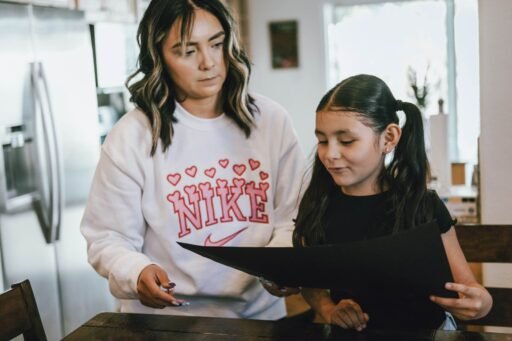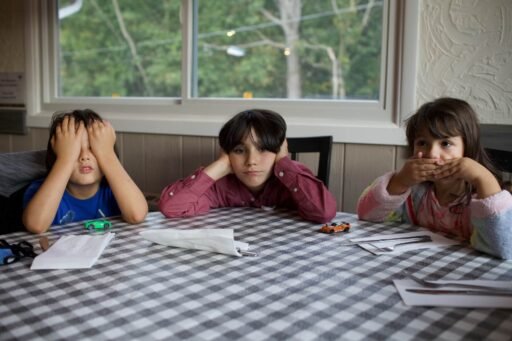Imagine trying to navigate a world where your heart races, your palms sweat, and your mind is constantly filled with worry. Now, imagine trying to explain these complex emotions to a child. It may seem challenging, but understanding anxiety is crucial for children’s emotional well-being. In this article “How To Explain Anxiety To A Child”, we will explore effective strategies and simple language to help you explain anxiety to a child in an approachable and compassionate manner. By shedding light on this topic, we hope to equip parents and caregivers with the tools they need to support and empower children who are grappling with anxiety.
What is Anxiety?
Definition of anxiety
Anxiety is a common emotion that everyone experiences from time to time. It is a feeling of unease, worry, or fear that can arise in various situations. When you feel anxious, your heart may start racing, your palms may become sweaty, and you may have a sense of restlessness or difficulty concentrating. This is your body’s natural response to a perceived threat or stressor.
Types of anxiety
There are different types of anxiety that people can experience. Generalized Anxiety Disorder (GAD) is characterized by excessive worrying about everyday things and events, even when there is no specific reason to be concerned. Social Anxiety Disorder involves feeling extremely anxious or self-conscious in social situations. Specific phobias are intense fears triggered by certain objects or situations. These are just a few examples of anxiety disorders, and it’s important to remember that everyone’s experience with anxiety is unique.
Recognizing Anxiety in Children
Common symptoms of anxiety in children
Children may express their anxiety in different ways compared to adults. Some common symptoms of anxiety in children include restlessness, irritability, difficulty sleeping, nightmares, stomachaches or headaches, avoidance of certain activities or places, excessive worrying about everyday activities, and frequent seeking of reassurance. It’s important to be observant of these signs as they may indicate that your child is experiencing anxiety.
Impact of anxiety on daily life
Anxiety can have a significant impact on a child’s daily life. It may make it difficult for them to concentrate in school, participate in social activities, or even enjoy everyday experiences. Anxiety can cause distress and limit a child’s ability to fully engage in various aspects of life. That’s why it’s crucial to address anxiety and empower children to manage it effectively.
Importance of Explaining Anxiety to a Child
Reducing fear and confusion
By explaining anxiety to your child, you can help reduce any fear or confusion they may have about their emotions. Children may not understand why they feel the way they do, and this lack of knowledge can make anxiety even more overwhelming for them. When you explain anxiety in simple terms, you provide them with a framework to understand their own feelings and experiences.
Promoting empathy and understanding
By teaching your child about anxiety, you can also promote empathy and understanding. When they realize that anxiety is a common emotion experienced by many people, they may feel less alone and more connected to others. This understanding can help them be more compassionate towards themselves and others who may be dealing with anxiety as well.
Empowering the child to manage their anxiety
By explaining anxiety to your child, you are empowering them to take control of their emotions and manage their anxiety in healthy ways. When children understand that anxiety is a normal response to certain situations, they can begin to develop strategies to cope with it. This knowledge gives them a sense of agency, helping them feel more capable and confident in navigating their anxiety.
Choosing the Right Time and Place
Creating a calm and safe environment
When discussing anxiety with your child, it’s important to create a calm and safe environment. Find a quiet and comfortable space where they feel secure and free from distractions. Creating this atmosphere will help your child feel more at ease and open to discussing their emotions.
Finding a suitable moment for the conversation
Timing is key when discussing anxiety with your child. Choose a time when both you and your child are relaxed and able to give the conversation your full attention. Avoid bringing up the topic when either of you is stressed or preoccupied with other things. By finding the right moment, you can ensure that your child will be receptive and engaged in the conversation.
Using Age-Appropriate Language
Adapting the explanation based on the child’s age
When explaining anxiety to your child, it’s important to use language that is appropriate for their age and developmental stage. Younger children may benefit from simple explanations using concrete examples or visual aids, while older children can understand more abstract concepts. Adapting your language ensures that your child can fully grasp the information and relate it to their own experiences.
Avoiding complex or overwhelming terms
While it’s important to provide accurate information, it’s equally important to avoid overwhelming your child with complex terminology. Keep your explanations simple and easy to understand, using words and concepts that they are familiar with. By doing so, you can prevent your child from feeling confused or discouraged when trying to comprehend their anxiety.
Explaining Anxiety in Simple Terms
Emphasizing that anxiety is a normal and common emotion
Start by reassuring your child that anxiety is a normal and common emotion that everyone experiences at some point. Explain that anxiety is like a warning sign from our brain, trying to protect us from perceived threats. Let them know that it’s okay to have these feelings and that they are not alone in experiencing them.
Comparing anxiety to other emotions (e.g., fear, excitement)
To help your child understand anxiety better, you can compare it to other emotions they are familiar with. For example, explain that anxiety is similar to feeling scared or worried, but it can also be similar to feeling excited or nervous about something new or challenging. By making these comparisons, you can help your child see that anxiety is a natural part of life and can be managed.
Describing physical and emotional sensations related to anxiety
To paint a clearer picture of anxiety, describe the physical and emotional sensations that go along with it. Let your child know that anxiety can make their heart beat faster, their stomach feel queasy, and their thoughts race. Emphasize that these sensations are not dangerous, but simply the body’s way of responding to a perceived threat. By explaining these sensations, you can help your child recognize and identify their own anxiety.
Helping the Child Understand Their Specific Anxiety
Identifying triggers or situations that provoke anxiety
Every child’s anxiety is unique, so it’s important to help them identify the specific triggers or situations that provoke their anxiety. Listen to your child’s concerns and ask open-ended questions to encourage them to express their feelings. By understanding what triggers their anxiety, you can work together to find appropriate strategies to manage and cope with those situations.
Discussing the child’s personal experiences with anxiety
Encourage your child to share their personal experiences with anxiety, including how it makes them feel and the challenges they face. By providing a safe space for them to open up, you can foster open communication and build a deeper understanding of their anxiety. This dialogue also allows you to offer support and guidance tailored to their individual needs.
Encouraging Open Communication
Creating a safe space for the child to express their feelings
It’s essential to create a safe and non-judgmental space for your child to express their feelings openly. Encourage them to share their thoughts and emotions without fear of criticism or ridicule. Make it clear that their feelings are valid and that you are there to listen and support them unconditionally.
Listening actively and validating their emotions
When your child shares their feelings, actively listen to them without interrupting or dismissing their concerns. Reflect back what they are saying to show that you understand and validate their emotions. Using phrases like “I hear you” or “That sounds challenging” can help your child feel heard and acknowledged, strengthening the bond of trust between you.
Offering Coping Strategies
Introducing relaxation techniques (e.g., deep breathing, mindfulness)
Teach your child relaxation techniques that can help them manage their anxiety in the moment. Deep breathing exercises, where they take slow, deep breaths in through the nose and out through the mouth, can help calm their body and mind. Mindfulness activities, such as focusing on the present moment or engaging in gentle stretches, can also help alleviate anxiety symptoms.
Teaching the child to challenge negative thoughts
Anxiety often stems from negative or distorted thoughts. Teach your child to recognize and challenge these thoughts by replacing them with more realistic and positive ones. Encourage them to question the evidence for their anxious thoughts and consider alternative explanations. By reframing their thoughts, they can reduce anxiety and build resilience.
Suggesting activities that help reduce anxiety (e.g., physical exercise, hobbies)
Engaging in activities that help reduce anxiety can be beneficial for children. Encourage your child to participate in physical exercise, as it releases endorphins and promotes a sense of well-being. Help them explore hobbies or activities they enjoy that provide a sense of calm and relaxation, such as drawing, reading, or listening to music. These activities can serve as healthy outlets for their anxious energy.
Seeking Professional Help
Recognizing when professional intervention is necessary
While most cases of childhood anxiety can be managed with parental support, there may be instances where professional intervention is necessary. If your child’s anxiety significantly interferes with their daily life, if they experience severe distress, or if their anxiety persists over an extended period, it may be appropriate to seek help from a therapist, counselor, or mental health professional. They can provide specialized guidance and support tailored to your child’s needs.
Explaining the role of therapists or counselors
When discussing professional help with your child, explain the role of therapists or counselors in a positive and reassuring manner. Let them know that these professionals are there to listen and help them develop strategies to manage their anxiety. They can provide a safe space for your child to express their thoughts and feelings, offer tools and techniques to cope with anxiety, and guide them on their path to emotional well-being.
Conclusion: How To Explain Anxiety To A Child
By understanding and explaining anxiety to your child, you can equip them with the knowledge and resources to manage their anxiety effectively. Remember to approach the topic with empathy, patience, and understanding, nurturing a supportive environment where they can freely express their emotions. With your guidance and love, your child can develop the necessary skills to navigate their anxiety and thrive in their everyday life.
Frequently Asked Questions:
Q1: How do you explain anxiety simply?
A: Explain anxiety to children by saying it’s a feeling of worry or fear that everyone experiences. Compare it to butterflies in the stomach or a “worry monster” that visits sometimes.
Q2: What is anxiety’s definition for kids?
A: For kids, anxiety is when their brains send signals that make them feel worried or scared, even when there’s no real danger. It’s okay to feel this way, and they can learn ways to cope.
Q3: What is the 3 3 3 rule for anxiety in children?
A: The 3 3 3 rule involves having the child name three things they see, hear, and feel when anxious. It helps ground them in the present moment and manage anxious thoughts.
Q4: What do you teach kids about anxiety?
A: Teach kids that anxiety is a normal feeling, and everyone experiences it. Help them understand their emotions, normalize seeking help, and teach coping strategies like deep breathing.
Q5: What is anxiety in one sentence?
A: Anxiety is a feeling of worry or fear that can make your heart race and your tummy flutter, even when everything is okay.
Q6: What does anxiety feel like?
A: Anxiety might feel like having “butterflies” in the stomach, a racing heart, or worrying thoughts that won’t go away. It’s different for everyone.
Q7: How do I explain anxiety to my 7-year-old?
A: Talk to your 7-year-old about anxiety by describing it as a normal feeling everyone has. Use simple language, and reassure them that it’s okay to talk about their feelings.
Q8: What is the first definition of anxiety?
A: The first definition of anxiety is a feeling of unease or worry, often accompanied by physical sensations like a faster heartbeat or tense muscles.
Q9: What is the 5 5 5 rule for anxiety?
A: The 5 5 5 rule involves helping a child name five things they can see, hear, and touch to distract from anxious thoughts and promote a sense of calm.
Q10: How do you explain anxiety to your parents?
A: Explain anxiety to parents by expressing your feelings openly. Share your experiences, describe your symptoms, and discuss how they can support you.
Q11: How do you teach anxiety?
A: Teach about anxiety through open conversations, age-appropriate books, and activities that promote emotional awareness. Encourage healthy coping mechanisms and stress the importance of seeking help.
Q12: How to calm anxiety?
A: Calm anxiety by practicing deep breathing, mindfulness, and engaging in relaxing activities. Encourage open communication and seek professional help if needed.
Q13: What triggers anxiety?
A: Anxiety can be triggered by various factors such as stress, change, or worrying about future events. Identifying triggers helps manage anxiety effectively.
Q14: Can you define anxiety?
A: Anxiety is a natural human emotion characterized by feelings of worry, fear, or unease. It can manifest physically and emotionally.
Q15: Can you explain anxiety to me?
A: Certainly. Anxiety is a common emotion involving feelings of unease or fear. It can affect thoughts, behaviors, and physical sensations, but it’s manageable with the right support.
Q16: Should I tell my child they have anxiety?
A: Approach it gently. Use simple language, reassure them it’s normal, and emphasize coping strategies. If needed, seek guidance from a mental health professional.
Q17: Can kids sense anxiety?
A: Yes, children can sense anxiety. They may pick up on changes in your behavior or emotions. Open communication helps them understand and feel supported.
Q18: How do I explain my mental illness to my child?
A: Explain your mental illness honestly, using age-appropriate language. Emphasize that it’s not their fault, and reassure them that you are taking steps to manage it.
Q19: What not to say to a child with anxiety?
A: Avoid dismissing their feelings, saying it’s just a phase, or comparing their experiences to others. Instead, validate their emotions and offer support.
Q20: Should I punish my child for anxiety?
A: No, avoid punishing a child for anxiety. Instead, focus on understanding their feelings, teaching coping strategies, and fostering a supportive environment.
Q21: What can I say to calm my child’s anxiety?
A: Offer reassurance by saying, “I’m here for you,” or “It’s okay to feel this way.” Encourage them to express their feelings and discuss coping techniques together.
Sources:
- Source How To Explain Anxiety To A Child
- Source 1. Anxiety
- Source 2. Anxiety Medication
- Source 3. Anxiety Treatment
- Source 4. Anxiety Symptoms
- Source 5. Anxiety Disorder



